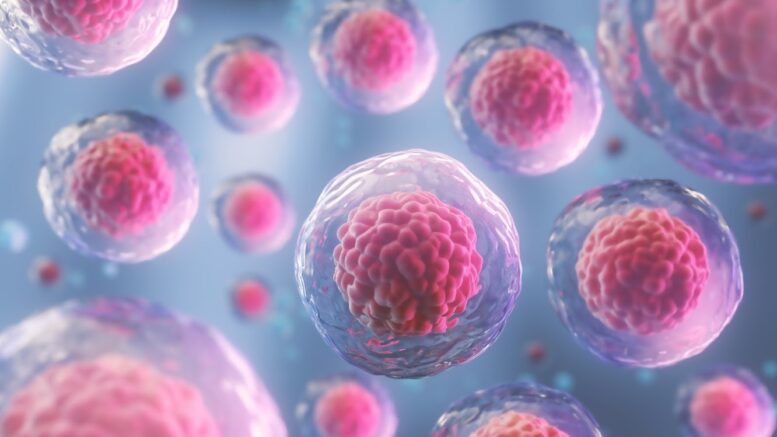“Promising but still puzzling.”
These words from a university news headline best summarize the field of stem cell therapy. Over the decades, countless studies have touted stem cells’ effectiveness in treating many illnesses and disorders, yet their mechanisms boggle the mind to this day. So, it’s reasonable for researchers (and the public to an extent) to be skeptical about unsubstantiated claims.
Regardless, stem cell research continues to show promising results, with one example in the field of pain management. This article explains how stem cell therapy may work in alleviating chronic pain and its potential for widespread use. As a disclaimer, the information presented here doesn’t necessarily constitute medical advice, and it’s essential to consult a doctor first.
Regrowing lost cells
Understanding the mechanism of stem cell therapy requires looking into the animal that inspired the field: the Axolotl. Native in Lake Xochimilco near Mexico City, this critically-endangered salamander has impressed researchers with its ability to regrow limbs and organs. Researchers believe that the secret lies in a process known as ‘dedifferentiation.’ (1)
Simply put, dedifferentiation involves making cells grow backward, changing their composition and function from before the process. After reverting them to the base stem cells, the body can ‘redifferentiate’ or regrow them into the needed cells. The process isn’t uncommon, as the body conducts it regularly to maintain homeostasis or balance. (2)
A game-changer in managing pain
In a way, stem cells are templates the body can tailor depending on what part needs new cells. In this regard, the possibilities of their application may as well be endless, including managing pain. Online sources like https://www.advancedstemcells.com/dr-poonia-md/ are expressing the need for novel treatment methods in response to the rise in the prevalence of chronic pain.
A recent study by Harvard medical researchers found that the number of people suffering from chronic pain has increased by 10% from 2002 to 2018. That figure translates to more than ten million American adults suffering from one or some of at least five common types of pain: head, joint, face and jaw, neck, and lower back. (3)
While researchers argue that further study is still necessary, they agree that stem cell therapy can be employed as a treatment for three kinds of chronic pain.
Intervertebral disc disease
A review of seven studies by researchers based in Germany discovered that mesenchymal stem cells managed to significantly reduce patients’ disability index one year after their introduction. Complications were also minimal, with only one out of the nearly 100 cases reporting nucleus pulposus herniation. (4)
However, the studies didn’t test stem cell therapy on patients with fissures in the trabecula and invertebrate discs. Researchers said that the fracture might allow the stem cells to leak.
Neuropathic pain

Updated statistics show that at least one in four or five cases of chronic pain in the U.S. is neuropathic or involves disruptions in normal nerve function. Treating such conditions with stem cells hinges on the cells’ ability to supply the nervous system with neurotrophic factors. These substances are responsible for initiating differentiation in the nervous system.
Some research has attested to the effectiveness of neuropathic pain management using stem cells, but experts concur that it remains a challenge. In one study, introducing stem cells via intravenous means has largely been a hit and miss, as many stem cells fail to reach the area of injury and are trapped in the lungs instead.
Osteoarthritis
Cartilage in the joints is indispensable in allowing the body’s numerous limbs to move. But the lack of blood vessels and nerves means the body can’t regenerate cartilage effectively, leading to osteoarthritis. Because of this, osteoarthritis remains one of the leading causes of disability worldwide, with an estimated 242 million people suffering from it. (5)
Stem cell therapy has the potential to overcome the body’s limitation in replacing degraded cartilage. The procedure will most likely involve deriving stem cells from tissues in native sources like the bone marrow, body fat, and synovial membrane. The bone marrow alone is already well-known for its role in treating heart disease and leukemia, among others.
One major limitation of this potential is the lack of well-designed clinical trials. Some reports cite the prevalence of overestimation in the treatment’s effects and high susceptibility to bias.
Conclusion
There’s no denying the fact that stem cell therapy has produced favorable results in various fields of study, including chronic pain management. Nevertheless, modern medicine has yet to uncover the mechanism behind this treatment. Any hope for stem cell therapy to be standardized in the following years rests on improved study designs and cost-effectiveness compared to the current treatment methods.
References:
- “The Beginnings Of Stem Cell Therapy”, Source: https://the-dna-universe.com/2021/06/24/the-beginnings-of-stem-cell-therapy/
- “Dedifferentiation: inspiration for devising engineering strategies for regenerative medicine”, Source: https://www.nature.com/articles/s41536-020-00099-8
- “More and more U.S. adults have chronic pain, new study shows”, Source: https://www.medicalnewstoday.com/articles/more-and-more-us-adults-have-chronic-pain-new-study-shows
- “Autogenic mesenchymal stem cells for intervertebral disc regeneration”, Source: https://pubmed.ncbi.nlm.nih.gov/30415465/
- “Stem Cell Therapy and Its Significance in Pain Management”, Source: https://www.ncbi.nlm.nih.gov/pmc/articles/PMC8445610/
